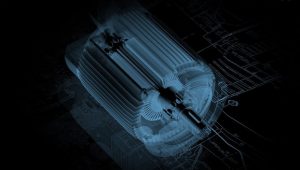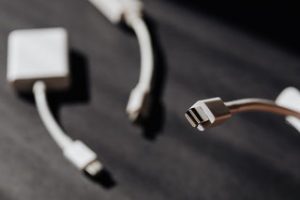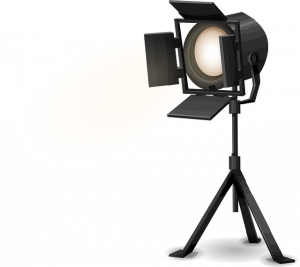ECODESIGN REQUIREMENTS AND CIRCULAR ECONOMY

Ecodesign requirements is a set of obligations to produce more sustainable goods in terms of energy and resources. This concept fits in a circular economy broader approach, in which materials and resources are constantly reused.
What is the Energy Related Products ErP Directive?
This is the main EU ecodesign regulation, which is the EU Directive 2009/125/EC ecodesign requirements for electrical-related products that represent a significant volume of sales.
The objective of this directive, as well as its associated European commission regulations for enforcement, is to reduce the environmental impact of Energy-Related Products (ErP).

As a result, in addition to WEEE obligations, a set of regulations from the European Ecodesign Directive 2009/125/EC has been published with requirements for:
- ecodesign,
- repairability (‘right to repair’ principle),
- environmental information,
- labeling, and
- recyclability
Product categories under Ecodesign Obligations :
Also :
- heating and cooling systems including air heating and cooling products, air conditioners, space and combination heaters, water heaters and boilers
- welding equipment
- power transformers
- appliances like dishwashers, dryers, freezers, fridges, ovens, refrigerators, vacuum cleaners and washing machines. Some professional appliances are also in the scope, such as refrigerators with a direct sales function (e.g., vending machines)
- Simple set-top boxes, video game consoles, etc.

Enforcement actions include consumption efficiency targets, stand-by/off-mode functions, and other eco-design specifications for the ErP Directive product categories. Specific ecodesign requirements also apply to electrical and electronic household and office equipment under Regulation No 1275/2008 implementing Directive 2005/32/EC for standby & off mode, networked standby, as well as electric power consumption.
Electrical and electronic devices, subassemblies, and components are also in the ErP scope if they have ‘an impact on energy consumption during use’ (art. 2, definition 1). As of April 1st, 2021, the manufacturers have to provide spare parts as well as maintenance and repair information for in-scope products.
Importantly, these energy efficiency requirements are part of the CE marking obligations.
Ecodesign Requirements for Electronic Displays
The regulation 2019/2021 ‘ecodesign requirements for electronic displays’ stems from the EU Directive 2009/125/EC ‘ecodesign requirements for electrical related products that represent a significant volume of sales’. This regulation does not apply to the following:
- Any electronic display with a screen area smaller than or equal to 100 square centimeters
- Projectors
- All-in-one video conference systems
- Medical displays
- Virtual reality headsets
- Displays in Article 2 of Directive 2012/19/EU
- Certain displays that are components or subassemblies under Directive 2009/125/EC.
Examples of the requirements listed in annex II of Regulation 2019/2021 include:
- Energy efficiency and Energy Efficiency Index (EEI) with calculations and functional requirements
- Information availability, which consists in making the product information for repair and reuse of electronic displays available to third parties
- Material efficiency.
Here are 5 material efficiency obligations :
1. Design for dismantling, recycling, and recovery:
- Manufacturers and other stakeholders must make dismantling information available, free or charge
- Dismantling information must include the dismantling steps, tools, or technologies needed to access the components, and
- End of life information must be available for 15 years following the placement of the last unit of a product model.
2. Marking of plastic components:
- Applies to plastic components heavier than 50g
- Type of polymer with the appropriate standard symbol must be specified
- If any component contains flame retardants, it must be marked accordingly.
3. Cadmium logo:
- ‘Cadmium inside’ logo must be applied if the concentration of Cadmium (Cd) exceeds 0.01% as defined in Europe RoHS.
- ‘Cadmium free’ logo must be applied if the concentration of Cadmium (Cd) does not exceed 0.01%.
4. Halogenated flame retardants:
Halogenated retardants are not allowed in the box and stand of electronic displays.
5. Design for repair and reuse:
- Availability of spare parts
- Access to repair and maintenance information
- Maximum delivery time of spare parts
These requirements apply as of March 1st, 2021.
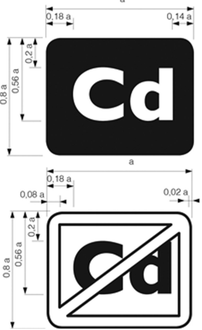
Ecodesign Requirements for External Power Supplies
According to the European regulation 2019/1782, the ecodesign requirements are used to improve environmental performance and save energy regarding external power sources (EPS) typically used in electrical and electronic household and office equipment.
The regulation 2019/1782 ‘ecodesign requirements for external power supplies’ stems from the ErP directive. The rules apply to external sources in active mode and no-load power consumption.
Examples of the requirements listed in the 2019/1782 annexes are:
- Energy efficiency, such as the values that the no-load power consumption and the average active efficiency must not exceed
- Instruction manuals for end-users
- Instruction for the nameplate, such as relevant load conditions
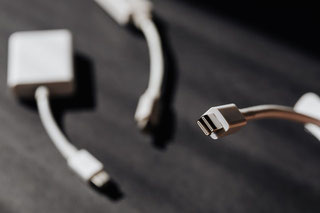
On energy efficiency, the no-load power consumption must not exceed these values, when the Po ≤ 49.0 W:
- AC-AC external power supplies, except low voltage and multiple voltage output external power supplies: 0.21W
- AC-DC external power supplies, except low voltage and multiple voltage output external power supplies: 0.10W
- Low voltage external power supplies: 0.10W
- Multiple voltage output external power supplies: 0.30W
The no-load power consumption when the Po > 49.0 W:
- AC-AC external power supplies, except low voltage and multiple voltage output external power supplies: 0.21W
- AC-DC external power supplies, except low voltage and multiple voltage output external power supplies: 0.21W
- Low voltage external power supplies: 0.21W
- Multiple voltage output external power supplies: 0.30W
These elements apply as of April 1st, 2020.
Other obligations apply worldwide, according to the International Efficiency Marking Protocol for External Power Supplies, which is the reference for the requirements in major markets, such as the European Union, the United States, Canada, or Australia.
Ecodesign Requirements for Electric Motors and Variable Speed Drivers
The European Regulation 2019/1781 on ‘ecodesign requirements for electric motors and variable speed drives’ abides by the EU Directive 2009/125/EC ecodesign requirements for energy-related products. These ecodesign requirements improve the energy efficiency of electric motors and variable speed drivers (VSDs).
Electric motors are used in a vast variety of applications, like pumps, fans, gears, compressors, machine tools, and robots. Many of these motors are equipped with electronic devices that control their speed. They are called variable speed drivers.
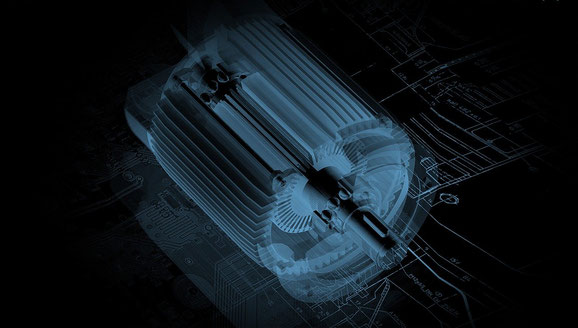
Since estimates show that electric motors systems consume approximately 50% of the EU electricity production, their efficiency turns out to be critical in terms of economy and environmental benefits.
Scope for Electric Motors and VSDs
The ecodesign regulation 2019/1781 applies to:
- Induction electric motors without brushes, commutators, slip rings or electrical connections to the rotor, on a 50 Hz, 60 Hz, or 50/60 Hz sinusoidal voltage with:
- Two, four, six, or eight poles;
- Rated voltage above 50 V and up to 1000 V;
- Rated power output from 0.12 kW up to 1000 kW;
- A rate based on continuous duty operation; and
- A rate for direct on-line operation.
- VSDs with three phases input with:
- A rate for operating with one motor within the 0.12 kW-1000 kW output range;
- Rated voltage above 100 V and up to 1000 V AC; and
- Only one AC voltage output.
Nevertheless, article 2 lists exclusions.
The Ecodesign Requirements for Electric Motors and VSDs, in a Nutshell
Most of these ecodesign requirements apply as of July 1st, 2021. They are detailed in Annex I of Regulation 2019/1781 and include:
- Minimum energy efficiency requirements for the motor, depending on the number of poles;
- Power losses data and maximums for both the motor and the VSD;
- Obligations to provide product information such as:
- Efficiency rates and levels;
- Specific manufacturer and product details, like the number of poles, the power, the frequency, the voltage, the speed and the number of phases of the motor.
- Operating conditions of the motor, including the maximum operating temperature;
- Details on the power losses;
If applicable, the reason for the exemption from the motor and VSD energy efficiency requirements.
Testing of Motors and VSDs
To demonstrate compliance with these ecodesign requirements, conformity assessments must be undertaken, and the appropriate technical documentation must be maintained. Motors and VSD with automatic test detection and software altering their ecodesign performance are strictly prohibited.
Ecodesign Requirements for Welding Equipment
The European regulation 2019/1784 “ecodesign requirements for welding equipment” originates from the EU Directive 2009/125/EC “ecodesign requirements for electrical related products that represent a significant volume of sales”. The ecodesign requirements are used to improve energy efficiency regarding welding equipment.
The rules apply to the following welding and allied processes:
- manual metal arc welding
- shielded metal arc welding
- self-shielded flux-cored welding
- flux cored arc welding
- metal active gas and metal inert gas welding
- tungsten inert gas welding
- plasma arc cutting
The requirements listed in the annex II of the regulation 2019/1784 cover:
- The resource efficiency, including:
- the availability of spare parts
- access to repair and maintenance information
- the maximum delivery time of spare parts
- information on the display, and
- requirements for dismantling and recycling.
- Information requirements, like the power source efficiency, the idle state power consumption, and others.

- The energy efficiency, with the values that the power source efficiency and the idle state power consumption shouldn’t exceed.
In respect of the latter, the minimum power source efficiency thresholds are:
- Welding equipment powered by three-phase power sources with direct current (DC) output: 85%
- Welding equipment powered by single-phase power sources with direct current (DC) output: 80%
- Welding equipment powered by single-phase and three-phase power sources with alternating current (AC) output: 80%
Additionally, the idle state power consumption must not exceed 50 W for all three kinds of above-mentioned welding equipment.
These energy efficiency requirements apply from January 1st, 2023. The other ecodesign requirements come into force as of January 1st, 2021.
Additional Compliance Obligations
Other ecodesign requirements are being implemented.
For example, in France, the Loi du 10 février 2020 relative à la lutte contre le gaspillage et à l’économie circulaire (law on fighting waste and the circular economy) includes the following rules on certain electrical and electronic devices, applicable from 2021:
- Fighting planned obsolescence: certain equipment such as washing machines or vacuum cleaners must have a repairability index. A durability index is also projected as of 2024
- Spare parts: mandatory information on the availability (or non-availability) of spare parts of mobile phones, televisions, and furniture. Second-hand spare parts must also be available
- Software updates: In the IT sector, buyers of computers or mobile phones must be informed of the duration for which their devices can endure successive software updates. These updates can indeed slow or obsolete devices
National transpositions of the EU Directive 2019/904 5 June 2019 on the reduction of the impact of certain plastic products on the environment are also underway.
How to be Compliant with Ecodesign Requirements and ErP?
EcoScan
In a nutshell, EcoScan, or Eco-Design assessment, is a solution to measure the environmental impacts of a new product. It enables monitoring and reducing the energy and resource consumption of this product.
Besides, EcoDesign allows you to meet the ISO 14001 Product Life Cycle (PLC) requirements of your environmental management system.
The EcoScans are part of the PLC exercise.
Several methods of EcoScans are available, such as the ReCiPe method.
To perform the Eco-Scans, it is necessary to have the following information on your new design:
- Parts weight
- Materials specifications
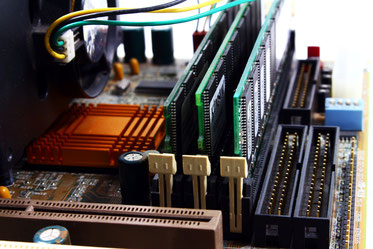
Any questions or needs on Eco-Design? Ask Enviropass!


